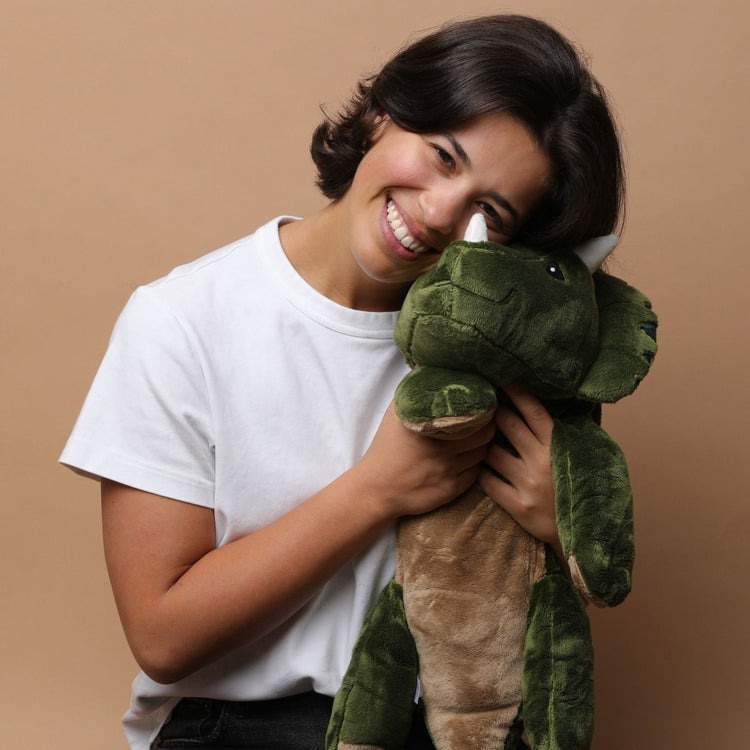In recent years, weighted stuffed animals have gained significant popularity, transcending their traditional role as children's toys to become therapeutic aids for individuals of all ages. These cuddly companions, filled with beads or pellets to add weight, offer comfort, relaxation, and sensory stimulation. This article delves into the world of weighted stuffed animals, exploring their benefits, diverse uses, and considerations for choosing the perfect one.
Understanding Weighted Stuffed Animals: What Sets Them Apart?
Weighted stuffed animals, also known as sensory weighted plush toys, differ from regular plush toys due to their added weight. This weight, typically distributed evenly throughout the toy, provides deep pressure stimulation, which can have calming effects on the nervous system. Unlike standard plush toys, these specialized companions are designed with therapeutic intent, aiming to alleviate anxiety, promote relaxation, and improve focus.
The Therapeutic Benefits of Weighted Stuffed Animals
- Anxiety Reduction: The gentle pressure exerted by weighted stuffed animals can mimic the sensation of a comforting hug, triggering the release of neurotransmitters like serotonin and dopamine, which are associated with feelings of happiness and relaxation. This can help reduce anxiety levels in both children and adults.
- Sensory Integration: Individuals with sensory processing disorders or autism spectrum disorder often benefit from sensory stimulation to regulate their sensory experiences. Weighted stuffed animals provide proprioceptive input, aiding in sensory integration and promoting a sense of body awareness and control.
- Stress Relief: In today's fast-paced world, stress has become a ubiquitous companion for many. Weighted stuffed animals offer a tangible way to unwind and de-stress, serving as soothing companions during moments of tension or overwhelm.
- Improved Sleep Quality: The calming effects of weighted stuffed animals can extend to bedtime routines, helping individuals achieve a deeper and more restful sleep. The gentle pressure can promote relaxation and decrease nighttime restlessness, leading to improved sleep quality.
Exploring the Diverse Uses of Weighted Stuffed Animals
- Therapeutic Interventions: Weighted stuffed animals are utilized by occupational therapists, psychologists, and other healthcare professionals as part of sensory integration therapy, anxiety management strategies, and trauma-informed care approaches.
- Educational Settings: In classrooms, weighted stuffed animals can serve as tools to enhance focus and attention span, particularly for students with attention deficit hyperactivity disorder (ADHD) or sensory processing challenges. These plush companions offer a discreet way to provide sensory input without causing disruption.
- Support for Special Needs: Individuals with special needs, including those with autism, ADHD, or anxiety disorders, may find comfort and support from weighted stuffed animals in various settings, such as home, school, or therapy sessions. These companions can help regulate emotions and provide a sense of security during challenging moments.
- Everyday Relaxation: Beyond therapeutic settings, weighted stuffed animals have found a place in everyday life as companions for relaxation and stress relief. Whether snuggled up on the couch while reading a book or placed on a desk during a hectic workday, these plush toys offer a comforting presence.
Considerations When Choosing a Weighted Stuffed Animal
- Weight Distribution: Opt for a weighted stuffed animal with evenly distributed weight to ensure consistent pressure across the body. This promotes comfort and prevents discomfort or uneven pressure points.
- Size and Shape: Consider the preferences and needs of the individual who will be using the stuffed animal. Some may prefer larger, full-body options for maximum sensory input, while others may prefer smaller, more portable companions.
- Fabric and Texture: Choose a plush toy made from soft, hypoallergenic materials that are gentle on the skin. Additionally, consider the texture of the fabric, as some individuals may have sensory sensitivities to certain textures.
- Washability: Since weighted stuffed animals are often used regularly, especially by children, opt for toys that are machine washable for easy cleaning and maintenance.
Conclusion: Embracing the Comfort and Support of Weighted Stuffed Animals
In a world filled with stressors and distractions, weighted stuffed animals offer a comforting refuge, providing a unique blend of sensory stimulation and emotional support. From anxiety reduction to improved focus and relaxation, these plush companions have found their place in therapeutic interventions, educational settings, and everyday life. By understanding their benefits, diverse uses, and considerations for selection, individuals of all ages can embrace the soothing embrace of weighted stuffed animals as they navigate life's ups and downs. Visit the official website of breaseworld.com


No comments yet